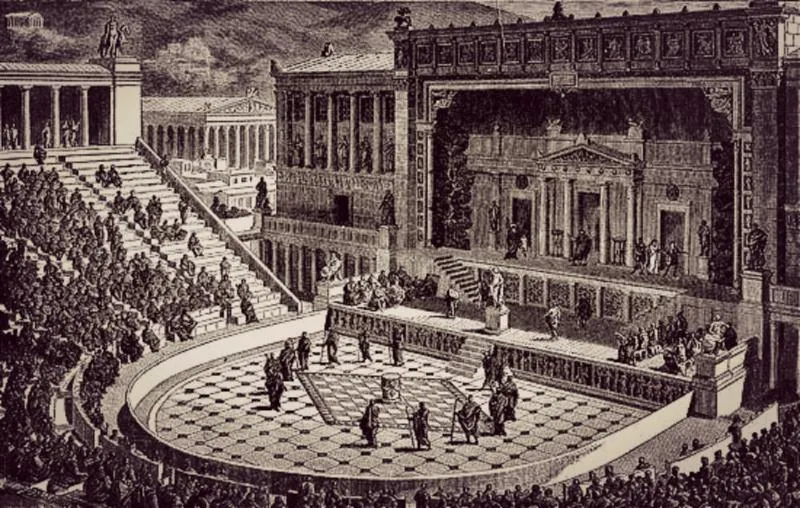Symbol of gluttony, celebration, fertility, and dramatic arts.

Originally, the Dionysia festival was celebrated in Attica, a rural region of Ancient Greece. These Dionysus festivities were held in the winter in all of Attica’s towns. They were known as the Vine Festival, although they were not yet linked to the Greek god Dionysus. People carrying phallio led a pompe procession, which was followed by people carrying baskets, loaves of food, jars of water, and wine, among other contributions. There would be singing and dancing competitions following the pompe. Dramas and comedies were also performed at some of these events.
The City Dionysia took place in highly populated locations. It was known as the Grand Dionysia, and it took place every spring. Everyone who participated in the Grand Dionysia would march to Athens’ Dionysus Theater. A pompe comparable to that of the Rural Dionysia would be staged, but on a larger scale. Weapons and spears would be carried in the pompe in subsequent years to commemorate Athens’ military might. Following the procession, a competition for the best flute player and poet was held. A bull was sacrificed and everyone was fed during the competition. Later in the day, riotous celebration erupted in Athens’ streets. The playwrights began a competition the next day. There were five days of plays, with comedies and tragedies alternated. The winners were presented with an ivy wreath on the final day, and there was a closing procession.
When the celebrations began to take place in the city, they all became identified with the god Dionysus. He was the deity of alcohol, feasting, and procreation.
